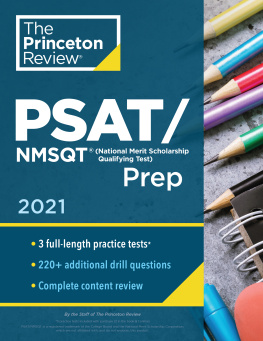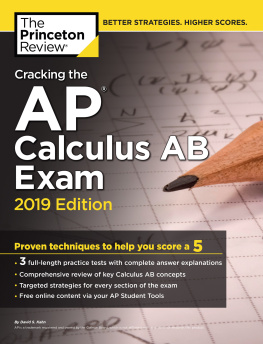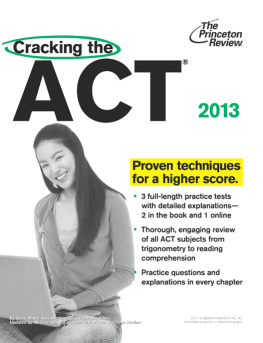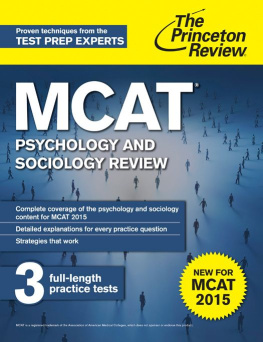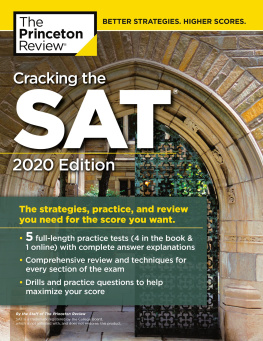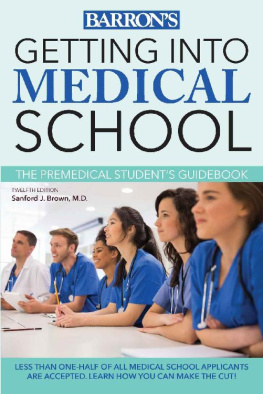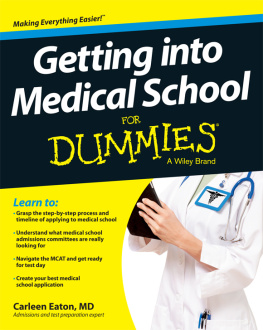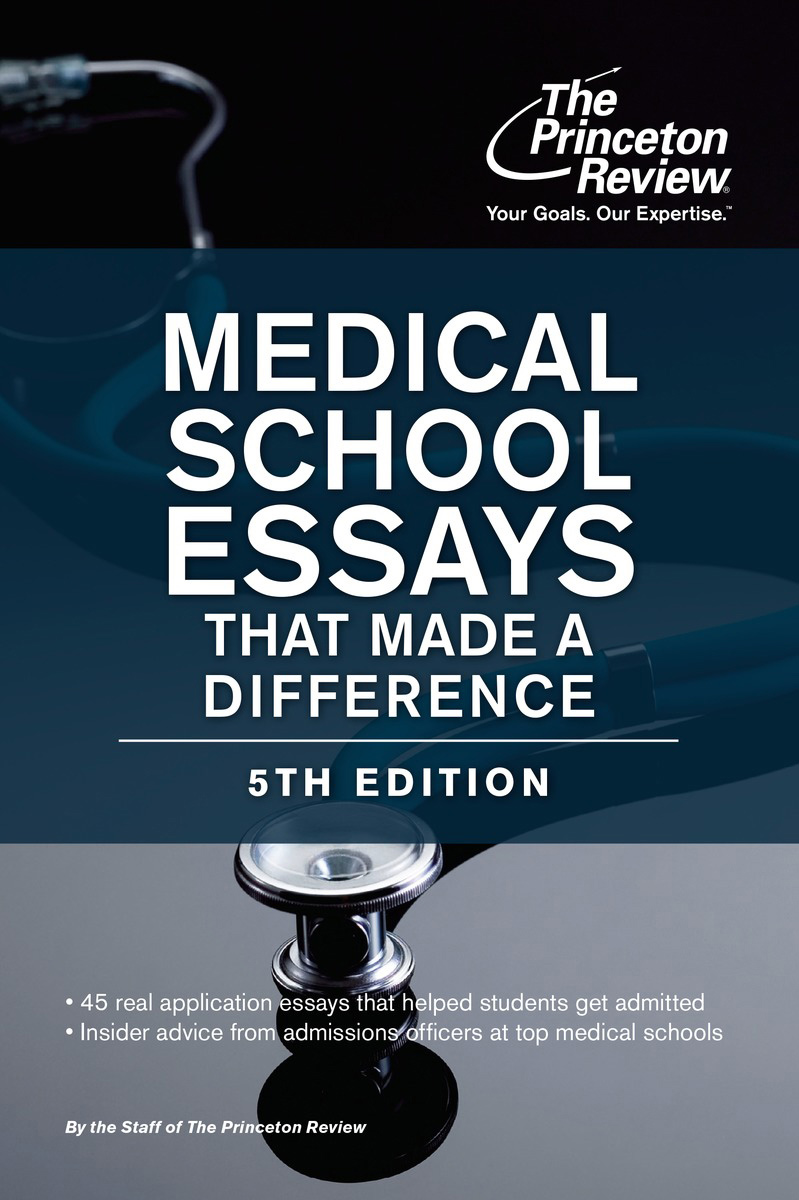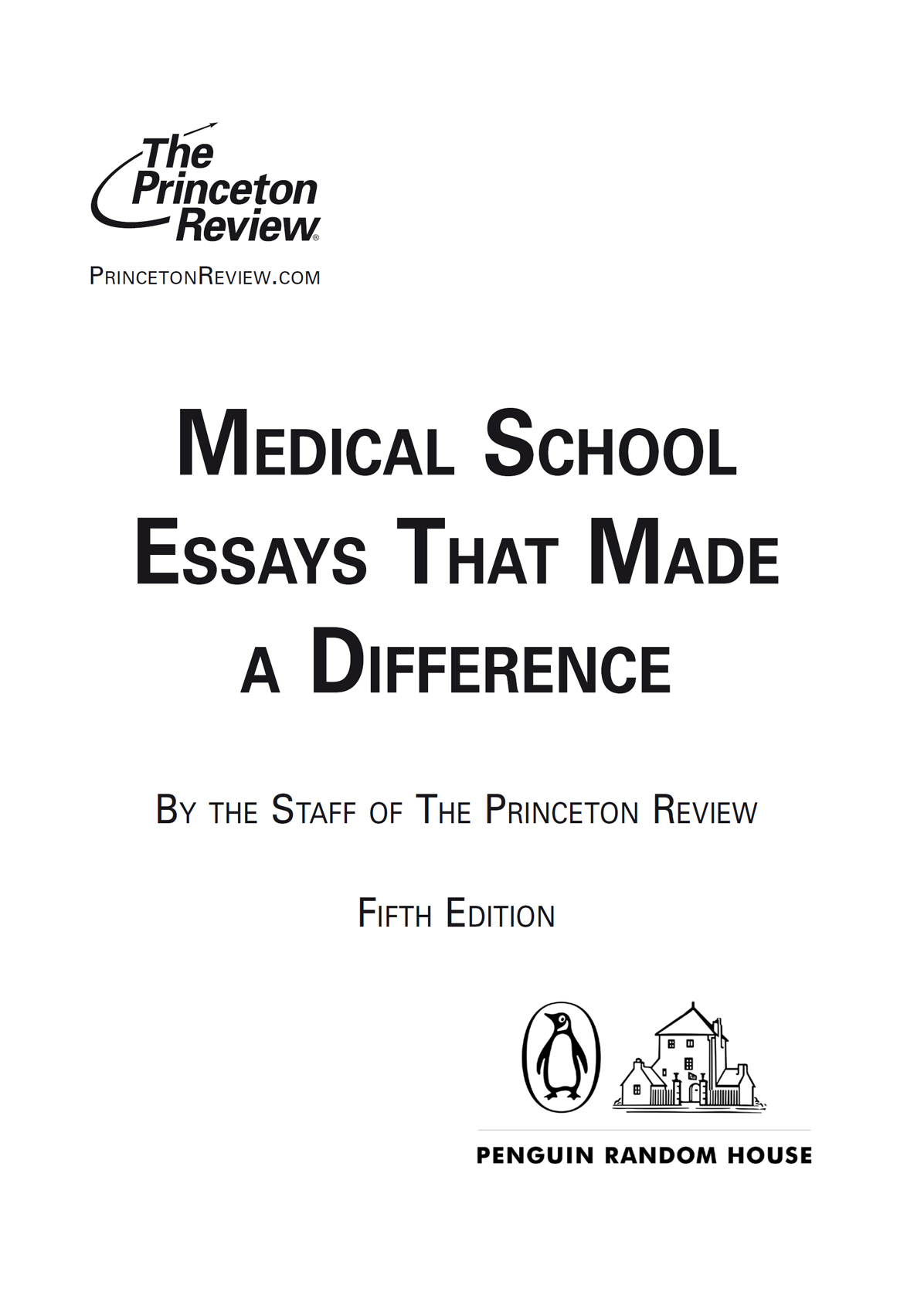2014 by TPR Education IP Holdings, LLC. All rights reserved.
Cover art RAMON PRECIADO / Alamy
Published in the United States by Random House, LLC, New York, and simultaneously in Canada by Random House of Canada Limited, Toronto.
A Penguin Random House Company.
The Princeton Review is not affiliated with Princeton University.
ACKNOWLEDGMENTS
Many thanks are owed to the people who proved instrumental in this books development. The members of our publishing team, Robert Franek, Pia Aliperti, Stephen Koch, and Scott Harris; Tyler Corvin, Sharon Forward, Deanna Hughes, Lorna Kenyon, Andrea OBrien, Courtney Thompson, Dr. Richard Weismab and Jennifer Welch, who kindly set aside time to detail the particulars of their institutions admissions process; and, of course, the amazing students who took time out of their anatomy labs and study hours to offer examples of their writing for the benefit of future generations of medical school applicantsthank you all.
CONTENTS
Introduction
WHY DID WE PRODUCE THIS BOOK?
Too many freaked-out premeds with outstanding academic records, enviable MCAT scores, and impressive experiences outside the classroom encounter frustration with their medical school personal statement. Given the task of boiling down their desire to be a doctor to a single page of prose, many dont even know where to start. This book is designed to show that there are many different ways to approach the personal statement and that, if a student reflects on whats most important in his or her life, he or she will indeed have something to write about. Our evidence is enclosed herewith: actual personal statements that got living, breathing premeds into medical school.
The personal statements in this book display a range of creativity and sophistication with the written word. Some are so good they may intimidate you; others may hardly impress you. We think youll find, as we have, that the most memorable ones illuminate their writers and edify their cause. Theyre believable and perhaps relatablebut above all else, theyre sincere.
Of course, personal statements dont stand alone; they have a place within the larger admissions context. In this book, we give you the whole picture: the college GPA; graduate school GPA, if applicable; extracurriculars; hometown; race; and Medical College Admissions Test (i.e., MCAT) scores of the student who wrote each personal statement we feature. Some students were also generous enough to provide essays they wrote for secondary applications. Finally, we include a list of admissions decisions for every single applicant whose personal statement youll read. We hope to provide you with an understanding of the relative selectivity of the medical schools that the students in this book applied to and the admissions context within which the personal statement functions. Sure, you can find the average MCAT scores and GPAs of last years freshman class in most college guides, but what youll find here are the complete profiles of individual applicants who are currently enrolled in, or have recently graduated from, U.S. medical schools.
HOW CAN THIS BOOK HELP YOU?
The early chapters of this book are primarily a guide to medical school admissions and the writing that med school applications entail, with some extra information that you may find helpful as you decide whether to pursue a career in medicine. These chapters will fill in any gaps in your knowledge and make you a well-informed premed.
The personal statements, secondary essays, applicants, and admissions results in this book are presented without commentary. Among the personal statements and secondary essays, not every sentence is eloquent, nor every comma perfectly placed. However, they all passed the ultimate test for medical school application soundness: Their authors gained acceptance into at least one of the medical schools to which they applied. Ideally, these personal statements and secondary essays will inspire you, supply you with paradigms for narrative and organizational structures, teach you ways to express yourself that you hadnt yet considered, and help you write exactly what you wish to communicate.
This book should also help prepare you to encounter both success and failure in the admissions process. Youre going to be a bit perplexed when UCSF accepts, Penn waitlists, and Mt. Sinai rejects a student in the book. As youll see, even wunderkindsweve profiled plenty of themget denied admission to top-flight schools. In fact, very few of the students you will encounter in this book got into every medical school to which they applied. So what should this mean to you? It means that disappointment is a part of life, even when you worked your buns off toward a particular goal. But even if you do get a rejection letter, theres no reason to feel completely bereft: a few fat envelopes are probably wending their way to you.
WHYD THEY DO IT?
Why would current medical school students and recent grads allow us to publish their personal statements, test scores, grades, and biographical information? They realize the value their stories have for prospective medical school students. After all, gaining admission to medical school is no small feat. Many said they were honored to have been chosen for publication and to have been given the chance to help the next generation of medical school students.
WHERED THEY GET IN?
Students with personal statements published in this book received offers of admission from the following U.S. medical schools:
Albany Medical College
Baylor College of Medicine
Boston University, School of Medicine
Brown University, Brown Medical School
Case Western Reserve University, School of Medicine
Cleveland Clinic Lerner College of Medicine
Columbia University, College of Physicians and Surgeons
Cornell University, Joan & Sanford I. Weill Medical Center
Creighton University, School of Medicine
Dartmouth Medical School
Drexel University, College of Medicine
Duke University, School of Medicine
Eastern Virginia Medical School
Edward Via Virginia College of Osteopathic Medicine
Emory University, School of Medicine
Florida State University, College of Medicine
George Washington University, School of Medicine and Health Sciences
Georgetown University, School of Medicine
Harvard Medical School
Howard University, College of Medicine
Johns Hopkins University, School of Medicine
Loma Linda University, School of Medicine
Louisiana State University, School of Medicine
Loyola University of Chicago, Stritch School of Medicine
Mayo Clinic College of Medicine, Mayo Medical School


